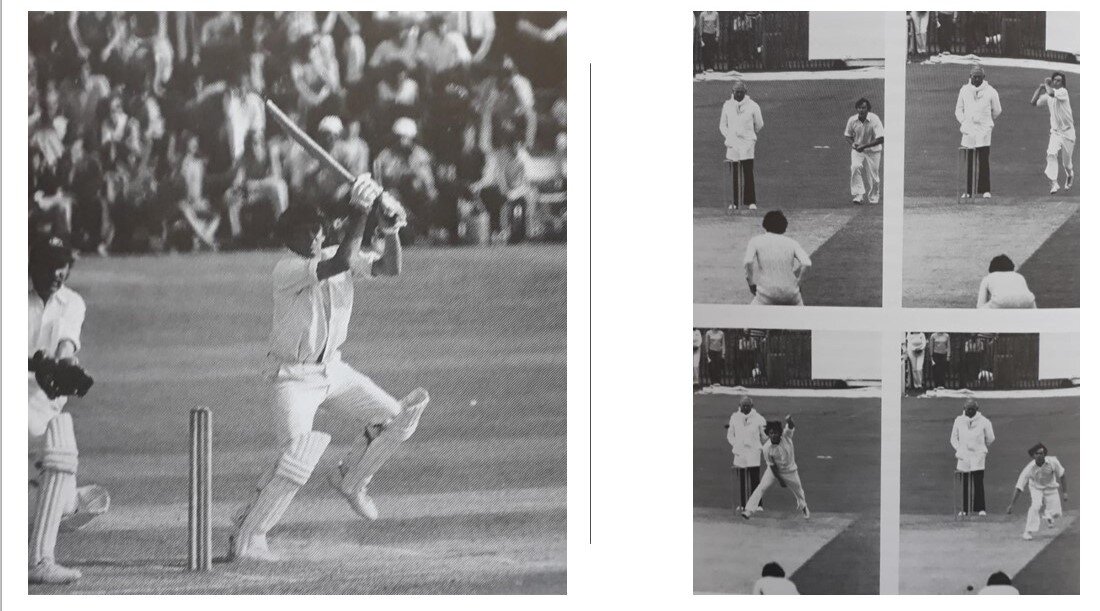by Arunabha Sengupta
Chelmsford, 1975.
Essex skipper Keith Fletcher retired hurt with a bruised shoulder. No, Jeff Thomson did not plug him. It was Andy Roberts for Hampshire who did that during the John Player League game on Sunday. On Monday, Fletcher could not resume his innings and Robin Hobbs took over the captaincy.
Rod Marsh was leading Australia with the Chappells and Lillee sitting out. However, Alan Turner and Bruce Laird put on 185 for the first wicket in the second innings, and by the end of Monday Australia were 227 ahead with eight wickets in hand. The next morning, Walters flayed the bowling. The visitors set Essex 353 to win, and Hobbs, as he walked off the ground, was asked by some members of the press whether he wanted to know his bowling figures. None for 73 from 11.
And then Thomson and Max Walker tore the heart out of the Essex innings. When Walker had Keith Boyce caught it was 109 for 5, effectively 109 for 7 with Fletcher absent hurt and Brian Edmeades absent ill. Stand-in skipper Hobbs stubbed out his Embassy Regal, pulled on his gloves, picked up his Grey Nichols and walked out to join opening batsman Brian Hardie. “Similarities with Sir Jack ends with the last name,” in the crowd Colin Smart told son Peter. “It will be over soon.”
Marsh had already rested Thomson. With the end in sight, he signalled for Walker’s sweaters. It would be the off-spinner Mallett and leg-spinner Higgs in charge of the operations.
Hobbs, averaging 6.80 in the seven Tests of his career, an average of 9.66 the previous season, started watchfully, hitting a boundary to get off the mark, and reaching 11 in 15 balls. And then he decided that the bank-holiday crowd could do with some entertainment.
The six soared over mid-wicket off Mallett. Four successive boundaries came off Higgs, all sweetly racing off the bat. Mallett bowled quicker through the air, not enjoying the stick. But, the runs galloped along. 50 off 30 balls, in spite of the circumspect start.
Hobbs acknowledged the cheers with his Grey Nichols held aloft. And then he took guard again.
Mallett ran in. The next two balls disappeared over long on.
Higgs was on from the Hayes Close End, caught up in the holiday atmosphere, bowling gentle leg-breaks. Mallett from the River End, not so friendly, bowling quicker and quicker. Hobbs kept charging down and depositing them over long on. If they changed length, Hobbs swept or pulled, and sometimes brought out his unorthodox, explosive, square cut.
Mallett went for 27 in one over. One six landing in the River Can, the ball lost. The longest hit finishing 90 yards away. Higgs was smashed through extra cover and struck hard and high for sixes, one towering straight drive clearing the sight screen, a row of trees and smashing a window at the Hayes Close End. One massive pull was caught by the Essex No 10, John Lever, ten rows back in the crowd. One elderly spectator had to be taken to the hospital—such was the general excitement.
At 96 he square cut Higgs. It sped off and rocketed into the fence. The hundred had taken 45 minutes and 45 balls, the second fifty just 12 minutes and 15 balls — reading 6,6,1,4,6,6,0,6,1,2,1,0,6,1,4.
Marsh stepped in. “Okay mate, we’ve had f***ing enough of you, you’ve had your fun, now get out otherwise I’m going to bring Thomson on.”
Hobbs promptly skied the next ball from Higgs to Bruce Laird at long-on. “I can say that I played against Australia when he was playing, but I wasn’t going to face Mr Thomson, sod that.” He was not the bravest of batsmen.
Out for 100 in 46 minutes, 7 sixes, 12 fours. A strike rate of 217.39. Australia won by 98 runs when last man David Acfield was stumped off Mallett after hitting him for a four and a six. Mallet 7.4-0-76-1.
The press now asked Hobbs whether he had planned the innings, whether he wanted to give personal interviews.
Hobbs received the Walter Lawrence Trophy and £250 for the fastest hundred from Percy Fender—the man who had hit one in 35 minutes in 1920.
That was Hobbs’s last first-class appearance for Essex.
He ended with a career batting average of 12.11. He was much better known as a leg-spinner. It was his leg-spin that took him across four continents and saw him playing seven Tests. He picked up 1,009 first-class wickets, 763 of them for Essex, 116 for MCC. He was a livewire on the field.
He enjoyed the distinction of playing a Test abandoned due to riots in Pakistan. He never failed to remind people of his distinction of playing in a Test series without batting, bowling or fielding. He also smoked Marlboro with Princess Margaret and took her to a discotheque in Barbados. More incredibly, he had the temerity to come back sozzled at four in the morning and wake up Geoffrey Boycott with a Test match just hours away.
But, Hobbs will perhaps be best remembered for that day at Chelmsford when he smashed the Australians for those glorious three quarters of an hour.
Robin Hobbs was born on 8 May 1942.

